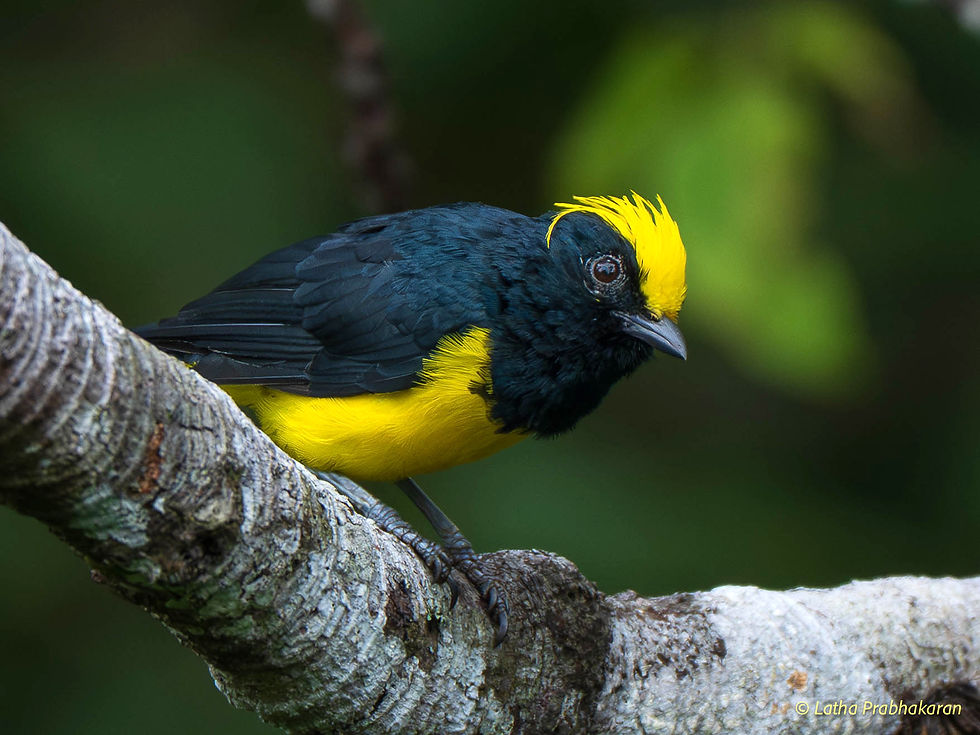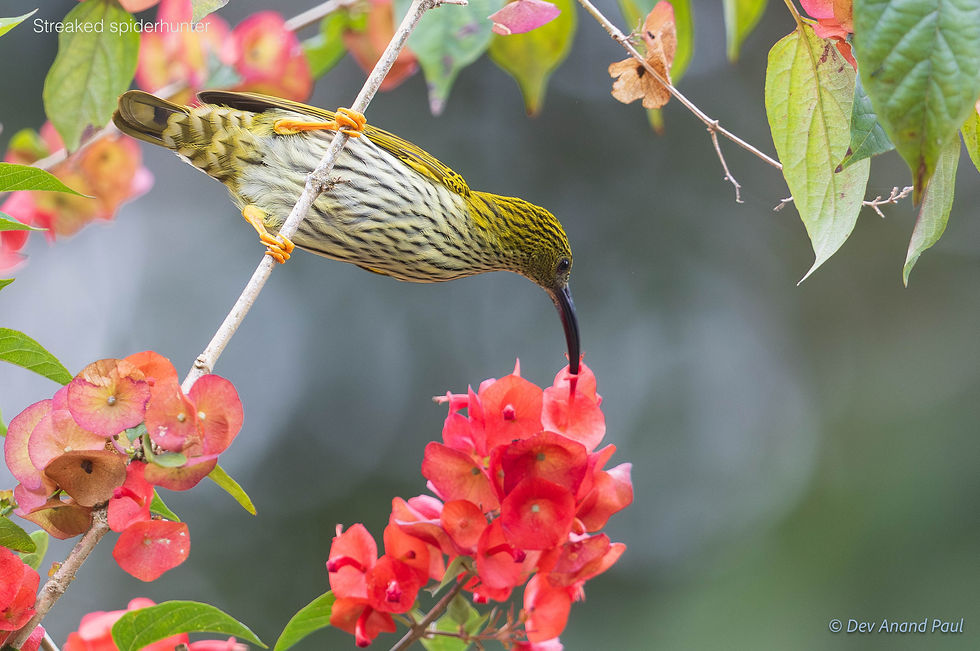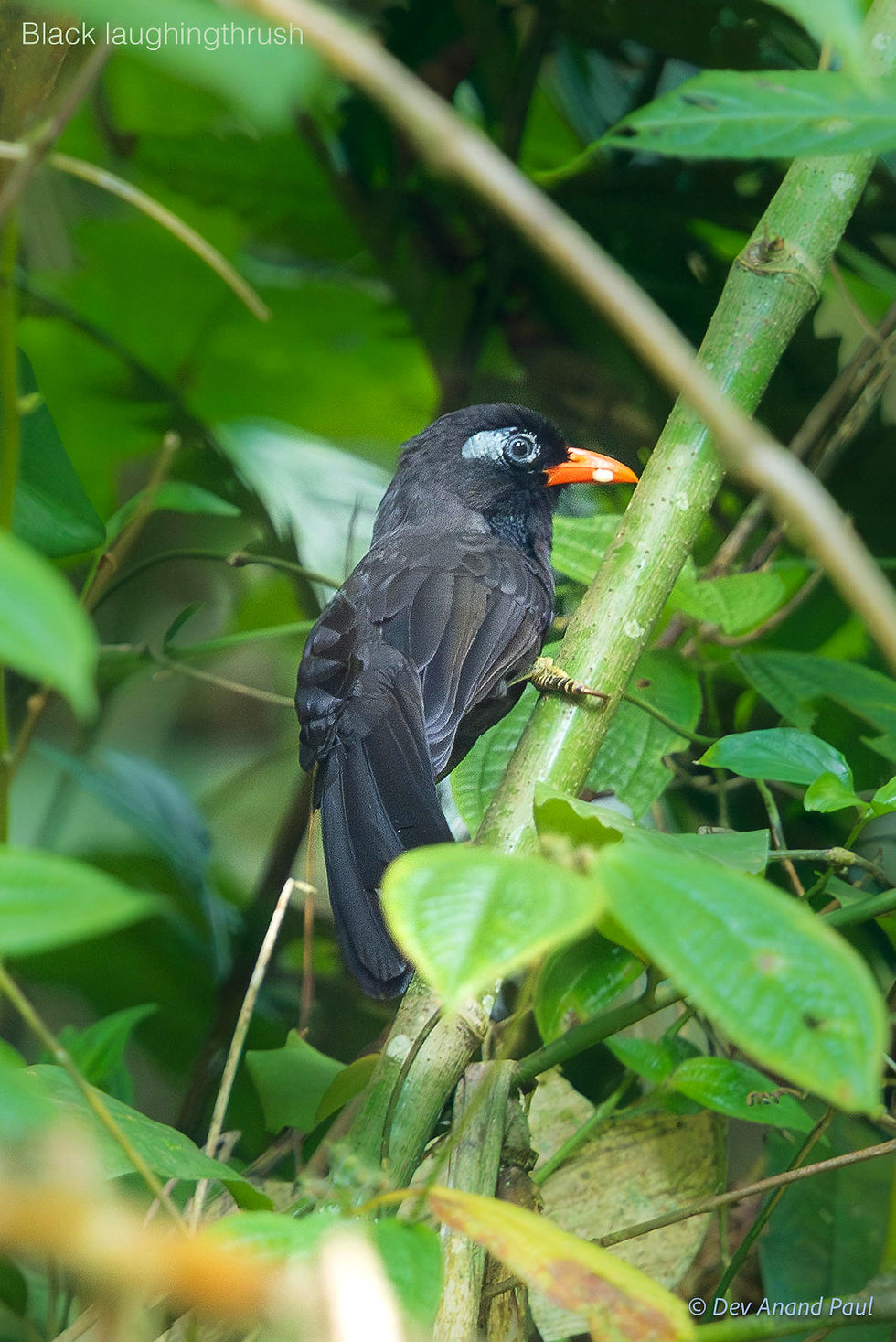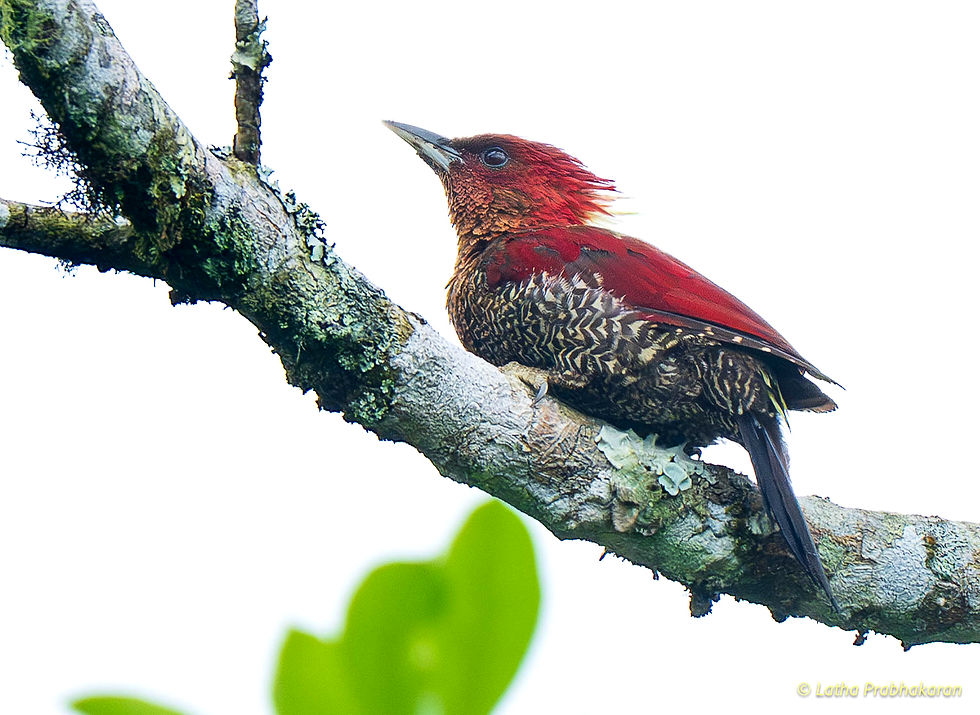Birding at Fraser’s Hill, Malaysia
- devanandpaul
- 6 days ago
- 5 min read
Updated: 5 days ago

After finishing birding at Taman Negara National Park, we set off towards Fraser’s Hill, a mountain retreat 1200–1500 metres above sea level—one of the best places to see montane birds in Malaysia.
Why Birding at Fraser’s Hill Is Special
Birdwatching in Fraser’s Hill is relatively easy and rewarding. Unlike many other sites that demand long treks or hours of waiting in hides, here a gentle walk along the winding mountain roads can reveal a wealth of birdlife. Roadside bird feeding stations (spots frequented by birds, drawn to the worms placed there by guides) draw some species up close for viewing, making Fraser’s Hill one of the best bird photography locations in Malaysia.
Moreover, this mountain village enjoys a pleasant climate throughout the year. Daytime temperatures hover around 24°C, and nights are cooler, at about 19°C—agreeable weather to spend long hours outdoors without the discomfort of tropical heat in Malaysia.
A Historical Mountain Retreat
In the 1890s, a Scottish trader named Louis James Fraser founded a tin-mining facility in this area, having discovered rich tin deposits. However, he mysteriously disappeared in 1910; moreover, by 1913, the ore was depleted. Hence, the mine was abandoned and the area fell into neglect. Years later it was ‘rediscovered’ by the Anglican bishop C.J. Ferguson-Davie of Singapore, who recognized its potential as a mountain retreat. In 1922, the hill station was officially opened, offering a break from the lowland heat.

Day 1
We reached Fraser’s Hill around 3:30 p.m. Our guides, Shakti Vel and Azmil Pillantong, led us directly to a small roadside feeding station near Kindersley Trail. The first bird to arrive was a pair of chestnut-capped laughingthrushes, followed by a rufous-browed flycatcher. Soon, a family of seven Malayan partridges, including three chicks, appeared and started foraging actively.


Next, Shakti led us to another feeding station, hoping to see the Malayan laughingthrush. Instead, a flock of silver-eared mesias appeared and stayed long enough for us to take some good photographs—a rare treat, as they are usually quick and restless. Nearby, a buff-breasted babbler moved through the undergrowth. The Malayan laughingthrush, however, was elusive.

A sudden, sharp call drew our attention uphill. Shakti whispered, ‘Collared owlet.’ After a short search, we spotted the little owl perched boldly in the open, a delightful surprise before heading back to the hotel.

Day 2
The morning birding began at another feeding station along Jalan Mager (Mager Road), flanked by a hillslope and a stream. A juvenile rusty-naped pitta appeared first. Soon, babblers arrived in succession: a grey-throated babbler, a buff-breasted babbler, and a streaked wren-babbler.



The calls of mountain fulvettas filled the air, and an Asian brown flycatcher skipped between branches.

We then saw a pair of large niltavas gleaming like jewels in the greenery, followed by a rufous-browed flycatcher, a lesser shortwing, and a white-tailed robin. But the morning highlight was the Malayan whistling thrush.



We returned to the previous evening’s feeding station, looking again for the Malayan laughingthrush. This time we had luck; a pair of them finally appeared, their bold markings standing out in the green undergrowth.

We continued birding along the roadside. A Blyth’s hawk-eagle soared overhead, a white-throated fantail flicked its tail as it darted for insects, mountain bulbuls called from trees, and a black-throated sunbird flashed by. When the morning activity slowed, we paused for lunch.
The evening birding turned out rich with sightings. We first saw a red-headed trogon, followed by a green-billed malkoha and a red-bearded bee-eater.

From treetops flew a red-throated barbet, a buff-rumped woodpecker, and a lesser racket-tailed drongo with its elegant tail streamers. A common green magpie and a sultan tit with its yellow crest brightened the scene.

Then came some smaller species: stripe-throated bulbuls, eastern crowned warbler, chestnut-crowned warbler, a golden babbler, and a flock of white-rumped munias. We ended the session with sightings of a streaked spiderhunter and an orange-bellied leafbird.

As darkness fell, we travelled to Jeriau Waterfall, hoping to see the Malayan eared nightjar. One flew high before landing far away. We then drove to Jalan Richmond, where, under a glowing lamppost, we found a brown wood owl perched on a pole; it occasionally swooped down to catch insects drawn to the streetlight.

Next on our list was the mountain scops owl. After an hour, we spotted one. Contented, we returned to the hotel.

Day 3
We started the morning birding along Gap Road. Flocks of little cuckoo-doves moved quietly, and a golden-whiskered barbet disappeared into the canopy. A pair of Pacific swallows rested briefly on a dry branch. We also spotted a Hume’s white-eye, an orange-bellied flowerpecker, an Asian fairy-bluebird, and some Sunda scimitar-babblers.

The highlight was a flock of black laughingthrushes hopping through the undergrowth, calling energetically. Overhead, plume-toed swiftlets, silver-rumped spinetails, and grey-rumped treeswifts zipped past. A little later, a group of pin-tailed parrotfinches appeared on a small bush, feeding.


In the evening, we wandered along Jalan Mager. A black-browed barbet was the first to catch our eye, perched on a dry branch. A moment later a black-and-crimson oriole appeared, partly hidden. A yellow-bellied warbler’s call added a cheerful note, and a banded woodpecker hammered steadily. A little pied flycatcher made short, darting flights from its perch. Then we spotted a pair of blue nuthatches creeping along tree trunks. As the light started to fade, two mountain imperial pigeons flew in and perched on a nearby branch. After dusk we returned to the hotel.




Day 4
Our last morning at Fraser’s Hill, we set out for one final walk along the quiet Gap Road. The first bird to greet us was a fire-tufted barbet feeding on ripe berries. Moments later, a red-billed malkoha appeared atop a small tree, its bright bill catching the early light.


Then, suddenly the forest came alive with a flurry of sightings: Arctic warbler, ochraceous bulbul, white-bellied erpornis. More followed: a sooty barbet calling from somewhere above; a little bronze-cuckoo flitting between branches; a velvet-fronted nuthatch creeping up a mossy trunk; a blue-winged leafbird glowing in the sunlight; and the final highlight, an Amur paradise flycatcher moving inside the foliage. With these, our birding trip came to an end. We thanked our guides, Shakti and Azmil, and van drivers for their guidance and care, and started our journey back to Kuala Lumpur.
Some species, like the bamboo woodpecker and Malayan cuckoo-shrike, eluded us, but with 182 bird species recorded across Fraser’s Hill, Bukit Tinggi, Ulu Langat, and Taman Negara, the forests had been more than generous to us.

Counting the species we sighted, I thought of Henry David Thoreau’s words: ‘Many men go fishing all of their lives without knowing that it is not fish they are after.’ Perhaps we too had come seeking birds, but what we found was something larger—the serene happiness of being in the wild.
Related posts:




Every species carry an unique beauty - God's gifted and you have written down so passionately as usual!!!